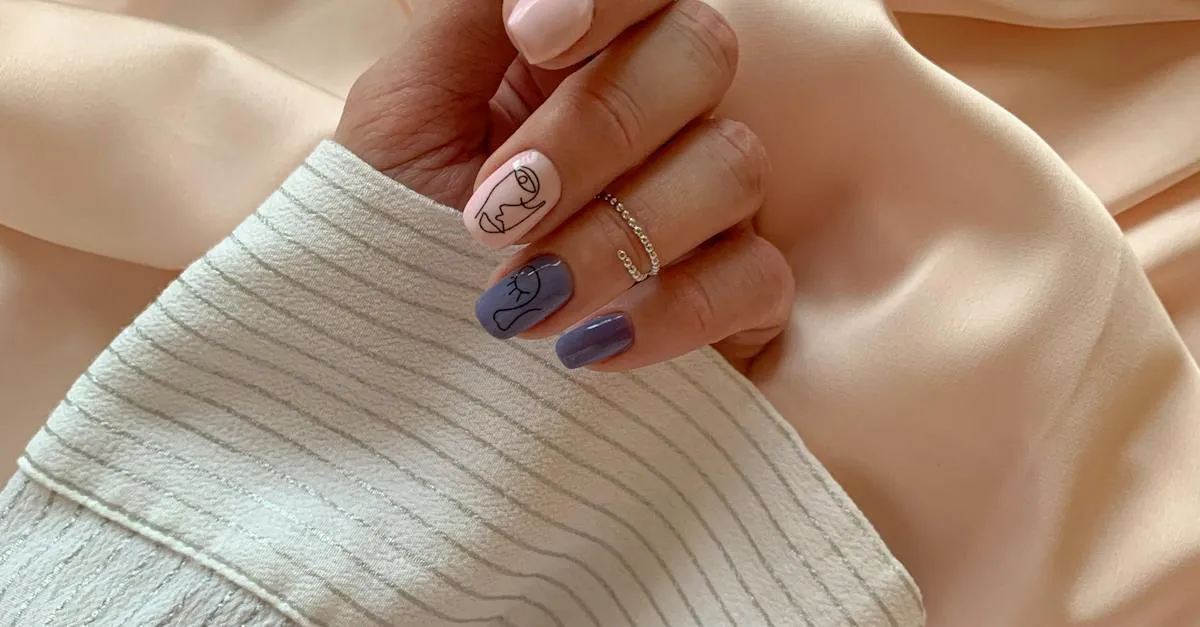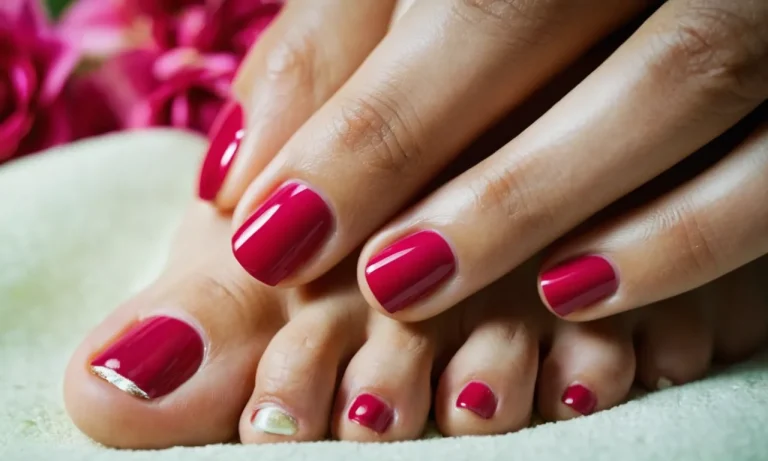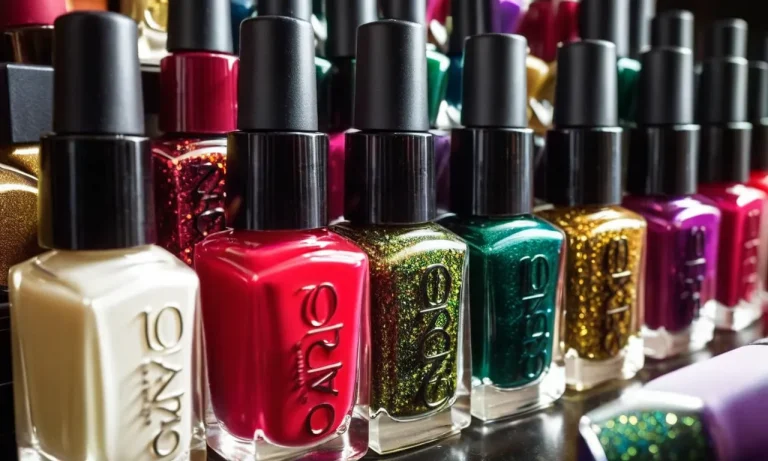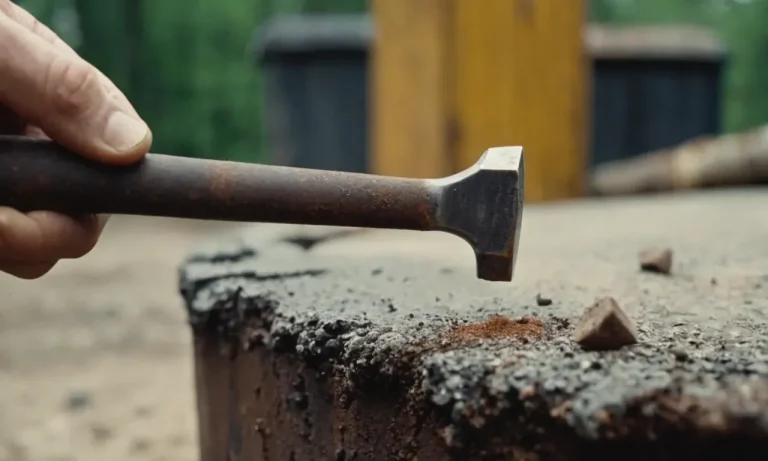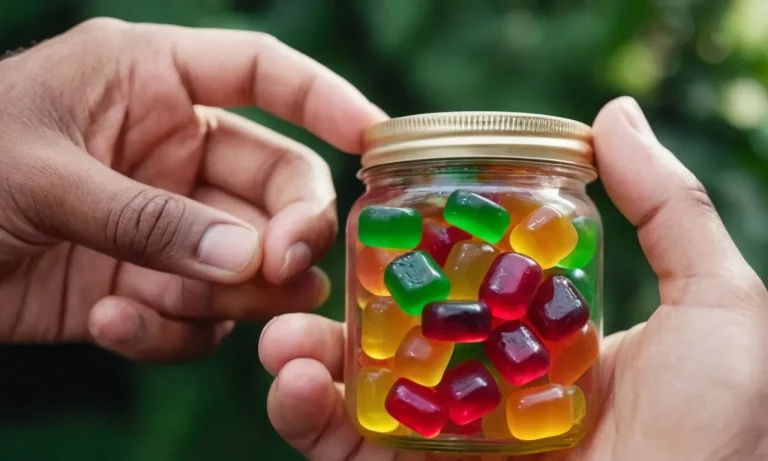What To Do When Your Nail Breaks
Chipped, cracked, or broken nails can happen to anyone. Dealing with a damaged nail can be annoying and even painful if left untreated. Don’t worry – with the right steps, you can repair your broken nail and get it looking neat again.
If you’re short on time, here’s a quick answer to your question: Gently file down any sharp edges, apply a strengthening base coat, fill in the break with nail glue or acrylic, then buff and polish the nail to blend with the rest.
In this comprehensive guide, we will cover everything you need to know about dealing with a broken nail, from stop-gap solutions to long-term nail repair.
Assess the Damage and Stop Further Breakage
Look at the nail and determine where and how it is broken
When a nail breaks, it’s important to inspect where and how the damage occurred. Look closely at the nail to determine if the break is partial or complete. A partial break may involve just a crack or a chip in the nail plate.
A complete break goes all the way across the nail, separating the nail into two or more pieces. Also note if the break is in the center of the nail or closer to the side edges. Breaks near the corners of the nail often lead to ingrown nails or additional cracking.
Checking the location and severity of the breakage helps you decide how to treat it.
File down any jagged or sharp edges
If the broken nail has rough, sharp edges or corners, gently file them with an emery board or nail file. Filing smoothes the edges and prevents snagging on clothing or further tearing of the nail. File in one direction, not back and forth, to avoid weakening the nail further.
Round off pointed tips for a safe, uniform edge. Filing eliminates hazards and discomfort until the nail can grow out.
Trim the nail if the break is near the tip
If the nail separated near the free edge or tip, trim it shorter using nail clippers or scissors. Removing the broken part prevents it from catching and tearing more. Leave some white nail plate attached for strength. Trim evenly across to create a straight edge.
The shorter length lessens risk of more splitting or breaking as the nail grows. Let the nail regrow to a safer length before reshaping the tip.
Apply cuticle oil or cream to condition the nail bed
After filing and trimming, apply cuticle oil, lotion, or cream. Moisturizers condition the nail plate and soften the cuticle area to aid healing. Massage the product into the nail bed and surrounding skin, especially near any cracks or roughness. Well-hydrated nails resist brittleness and breakage.
Reapply daily to heal damage and keep nails flexible as they grow.
Avoid using your nails or hands roughly to prevent more damage
While a nail is healing from a break, avoid harsh treatment that could cause more injury. Limit use of the fingers and nails on that hand when possible. Don’t bite or pick at nails. Wear gloves for wet work, cleaning, or gardening. Open doors carefully and avoid banging nails on hard surfaces.
Carry bags on the arm opposite the broken nail. LET the nail rest and recover. Proper care prevents additional breaking and allows the nail to mend.
Temporary Nail Repair Solutions
Base coat for strength
Applying a base coat under your nail polish can help strengthen nails and prevent breaks. Base coats typically contain nourishing ingredients like vitamins, proteins, and minerals that condition nails.
Look for a base coat labeled as a “strengthening base coat” or “ridge-filling base coat” for the most repair benefits. Using a base coat creates a protective layer between the nail and polish that reduces the risk of nails becoming damaged.
Nail glue or acrylic to fill gaps
For small cracks or breaks in a fingernail or toenail, an effective temporary fix is to apply a small drop of nail glue or acrylic nail product to fill in the gap. This helps seal the nail and prevents snagging. Lightly file the area first so the glue adheres properly.
Avoid getting glue on the surrounding skin. Once dry, gently buff the filled area to smooth it out. Nail glue dries quickly and can serve as a temporary patch until the nail grows out.
Tea bag or silk wrap for splits
Natural remedies like tea bags and silk fabric can mend split nails. For tea bags, cut a small piece of the tea bag to fit over the split nail. Apply nail glue to the underside of the tea bag piece and position it on the nail, then apply glue over the top.
The tannins in tea help harden the keratin in nails. For silk wraps, cut a strip of silk fabric to cover the nail split and glue it similarly to the tea bag. The silk provides structural support. Leave the wrap on as the nail grows out.
These techniques protect the split nail from snagging while allowing it to grow.
Reinforcement with toothpick or coffee stirrer
Splints made from household items can reinforce a cracked or split nail. Cut a toothpick or coffee stirrer to size to place underneath the nail over the crack. Apply a dot of nail glue at both ends to hold it in place.
The splint acts as a support beam to take stress off the damaged nail as it heals and grows out. It helps prevent further cracking. Make sure the splint is smooth and flush with the nail surface. Trim and reapply as needed while growing out the nail.
Buffing and polishing for smooth finish
Gently buffing and polishing nails after a repair promotes healing and masks imperfections. Use a fine-grit nail file or buffer to shape and smooth the fixed nail until flush with the surrounding area. Don’t file too much, as you don’t want to thin out the nail.
Apply nail strengthening polish evenly over the nail. Top it off with a shiny top coat. The polish seals the nail and makes cracks less visible. Re-apply the polish and top coat after a few days as it grows out for a pro-looking finish.
Promoting Long-Term Nail Health
Moisturize nails and cuticles daily
Keeping nails and cuticles well-hydrated is key for healthy, strong nails that resist breakage. Massage a rich moisturizer like coconut or olive oil into nails and cuticles once or twice per day. Products containing jojoba oil, vitamin E, and shea butter also nourish nail beds.
Consistent hydration keeps nails flexible and less likely to become dry and brittle.
Take biotin supplements
Biotin is an essential B vitamin that aids keratin production. Keratin is what makes up the protein structure of nails. One study found that taking 2.5 mg of biotin daily for 6 months increased nail thickness by 25%[1]. Foods like eggs, meat, nuts, seeds, and sweet potatoes contain biotin too.
But targeted supplements help ensure adequate intake for optimal nail health.
Avoid overexposure to water
While brief contact with water is fine, chronic wetness can cause nails to become soft and peel. Wear gloves when doing chores like washing dishes. Limit time in the shower and avoid long baths. After handwashing or swimming, thoroughly dry nails and apply a moisturizer.
Waterlogged nails tend to split and tear more readily when bumped or caught on surfaces.
Wear gloves for wet work
Protect nails by wearing rubber gloves when cleaning, gardening, working with chemicals/irritants, etc. Vinyl gloves worn under rubber gloves add further protection. Preventing damage from acute chemical and physical trauma reduces risk of nails becoming damaged or infected.
Let nails rest and avoid extensions
Give nails a break from polish, acrylics, and gel manicures every few weeks. These stressful enhancements lead to weakened nails over time. Even small breaks in nails allow moisture underneath – leading to more splitting and peeling.
Infrequent trims also help avoid too much pressure on nail edges that cause cracks and tears.
Eat a healthy, balanced diet
Just like skin and hair, nail health starts from within. Key nutrients for strong nails include:
- Protein – keratin production
- Zinc – nail growth and repair
- Iron – oxygen circulation for hard nails
- Biotin & other B vitamins – keratin structure
- Vitamin C – collagen formation underlying nails
- Vitamin E & omega-3s – flexibility, anti-inflammatory
Aim for a balanced diet with fruits, vegetables, healthy fats, and protein. Or take a supplement specifically formulated to strengthen brittle nails.
Professional Repair Options
Acrylics or gel overlay
If you have a nail that has cracked or broken down to the nail bed, having an acrylic or gel overlay applied by a professional can help protect and repair the damage. The technician will apply a form to shape and support the nail, then brush on layers of acrylic or gel product to rebuild the missing part of your nail and bond it to the remaining nail.
This provides a smooth, reinforced new nail surface that covers the break. Overlays look natural and last 2-3 weeks as the natural nail grows out.
Silk or fiberglass wraps
Another option for repairing a cracked or broken nail is using a fine silk or fiberglass material to wrap and bond to the remaining nail. The natural nail is prepared and shaped, then thin strips of silk or fiberglass are applied with a resin or glue in layers to cover the damaged part of the nail and bond to the intact nail surface.
This creates a light, natural looking wrap that is smooth and strong. Wraps can last up to 4 weeks and allow the natural nail to grow underneath the repair.
Tip overlays for extensive damage
If the nail damage is very severe extending down the nail bed, your technician may recommend using a plastic tip overlay for reinforcement. The natural nail is trimmed and shaped, then a plastic nail tip is custom-fitted to the end of the finger and bonded to the remaining nail using acrylic, gel or glue.
This tip provides a durable artificial nail surface to protect the fragile natural nail and hide imperfections while it grows out. Tips can last 3-4 weeks before needing filled or replaced.
Seeking professional help for severe breaks
If you lose a complete nail or suffer a painful break that affects the nail matrix or exposes you to infection, it’s best to seek professional help. Salons can properly trim and shape the nail, use anti-microbial treatments to prevent infection, and apply medication or specialized dressings before beginning a nail repair process.
For nail bed injuries, a doctor may be needed to cauterize and protect the sensitive nail matrix. Getting proper medical care ensures the best regrowth of a healthy new nail.
Conclusion
Damaged nails happen, but they don’t have to slow you down. With the right techniques, you can repair and restore your broken nail in no time. Pay attention to further conditioning and care for your nails to keep them strong and prevent future breaks.
Don’t be afraid to seek professional assistance for major nail damage or persistent issues.
Taking action as soon as your nail breaks is key. Whether you opt for a quick-fix or long-term solution, following these tips will have your nail looking great again in no time!

